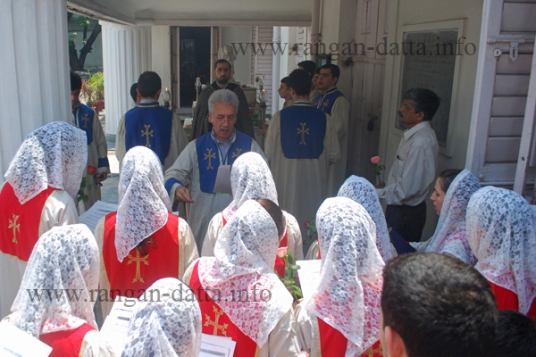Archive
Armenian Genocide Day, Armenian Church, Calcutta (Kolkata)
Armenian Genocide Day
24 April, Armenian Church, Calcutta (Kolkata)
Also see my blog post on Armenians of Calcutta (Kolkata)
“When we were marching from Mosul, Jumman [a sweaper of Bengal Ambulance Corps] saw an Armernian child on the banks of a stream near Ras al-‘Ain and picked him up. His mother must have died, and his father must have been killed… Jumman took on the responsibility of looking after the boy and named him Babulal. He used to call Jumman father (‘Baba’).”
Abhi le Bagdad by Sisir Sarbadhikiri
Source: Amitav Ghosh’s Blog
The amazing account came from a Bengal Ambulance Corps (BAC) volunteer Sisir Sarbadhikari’s diary which was later published as a book named Abhi le Bagdad (literally meaning Onwards to Bagdad). Written in Bengali it is a amazing first hand account of World War I (WWI). It is quiet likely that the Armenian boys parents were victims of the notorious Armenian Genocide.
Komagata Maru Memorial, Budge Budge, 24 Parganas (South)
Komagata Maru Memorial
Budge Budge, 24 Parganas (South)
Just next to the docks of Budge Budge, about 30 km south of Calcutta (Kolkata), lies a strange memorial. Popularly known as the “Punjabi Monument” it is modelled as the Sikh kirpan (dagger), the white and green cement structure rises in a magnificent arch to touch the sky.
The memorial is dedicated to victims of the notorious Komagata Maru Incident that happened almost a century ago.
“The visions of men are widened by travel and contacts with citizens of a free country will infuse a spirit of independence and foster yearnings for freedom in the minds of the emasculated subjects of alien rule.”
~ Gurdit Singh
In 1914, a wealthy Indian fisherman settled in Singapore, Gurdit Singh Sandhu, did quite the unthinkable. He chartered a Japanese steamship of 3,000-odd gross register tonnage to transport a large number of his Punjabi brethren from India to Canada in a bid to outsmart the tough immigration laws the northern American country had imposed to keep Asians out.














